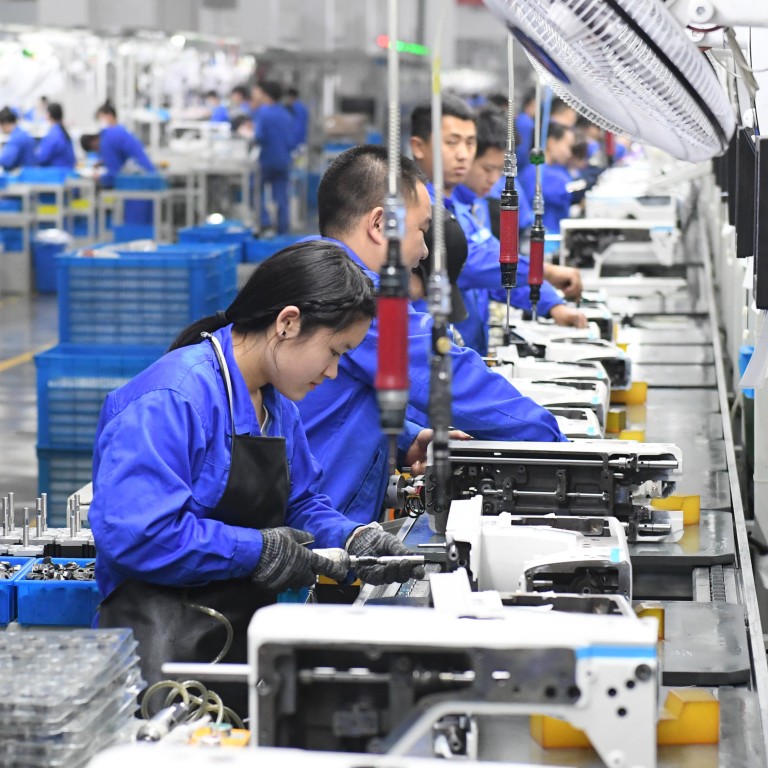
China’s economic recovery ‘on track’ as services activity hits 12-year high in March
- China’s official non-manufacturing purchasing managers’ index, which measures business sentiment in the services and construction sectors, rose to 58.2 in March
- The manufacturing gauge fell to 51.9 in March from 52.6 in February as growth for new orders and new exports orders eased
China’s rapid economic recovery remained robust in March, highlighted by business sentiment in the services and construction sectors hitting a 12-year high, suggesting the world’s second-largest economy is “is on track” after its reopening, analysts said.
But the official non-manufacturing PMI, which measures business sentiment in the services and construction sectors, rose to 58.2 in March from 56.3 in February.
After expanding for a third consecutive month, the non-manufacturing PMI reached its highest level since May 2011, with both the services and construction subindices also hitting record highs.
The PMI indicates China’s economic recovery is on track
“The PMI indicates China’s economic recovery is on track. The expansion of service sector activities is particularly strong, as the PMI for the service sector soared to the highest level in the past decade,” Zhang Zhiwei, president and chief economist at Pinpoint Asset Management.
“The strong momentum will likely continue in the coming months, as the new order index for the service sector continued to rise.”
The surge in the official non-manufacturing PMI largely reflects a jump in in-person activity following the lifting of coronavirus restrictions and waning infections, according to Julian Evans-Pritchard and Sheana Yue, China economists at Capital Economics, who also noted that the strength was concentrated in retail and transport.
The official composite PMI, which includes both manufacturing and services activity, rose to 57 in March, up from 56.4 in February.
The decline in the manufacturing PMI was partly because of the rebuilding of inventories following earlier supply chain disruptions, while the growth in demand also softened due to a slowdown in export orders, added Evans-Pritchard and Yue.
Within the official manufacturing PMI, the new orders subindex fell to 53.6 in March, down from 54.1, while the new export orders subindex fell to 50.4 from 52.4.
But 13 of the 21 industries surveyed for the manufacturing gauge recorded a higher PMI than the previous month, according to senior NBS statistician Zhao Qinghe, who pointed to “factors such as the high base of the previous month” as the reason for the decline.
“The official PMIs suggest that China’s rapid reopening recovery remained robust this month. The weak global backdrop weighed on manufacturing but services continued to benefit from a resurgence in consumer spending and construction was buoyed by fiscal support,” said Evans-Pritchard and Yue.
“This strength wont be sustained indefinitely, however. With much of the immediate boost from dismantling virus restrictions now already passed and policy set to turn less accommodative, the recovery is likely to moderate over the coming months.”
Analysts at Nomura pointed to China’s economy reaching “a sweet spot” after Beijing withdrew its zero-Covid policy, but cautioned that “this may not last long” due to the “rapidly worsening geopolitical tensions and financial concerns outside of China”.
“March has been even better than the first two months. Notably, market expectations have improved markedly as indicators like consumption and investment have become better, while job market and consumer prices remained stable.”
But the pace of the recovery will inevitably slow going forward, not least because the economy has already regained so much ground in such a short space of time
“There is still plenty of scope for a continued rise in economic activity in the months ahead, and we remain of the view that GDP growth will comfortably exceed the government’s growth target this year,” added Evans-Pritchard and Yue.
“But the pace of the recovery will inevitably slow going forward, not least because the economy has already regained so much ground in such a short space of time.”
Additional reporting by Mia Nulimaimaiti

.JPG?itok=J8tgfPmW&v=1659948715)